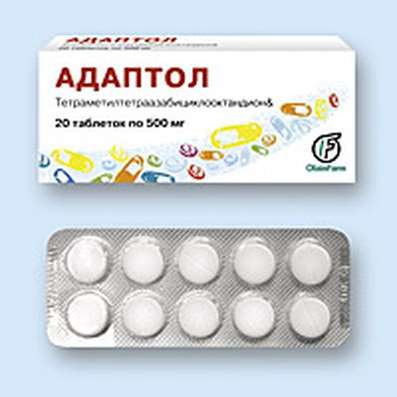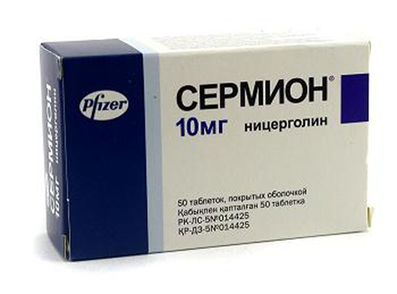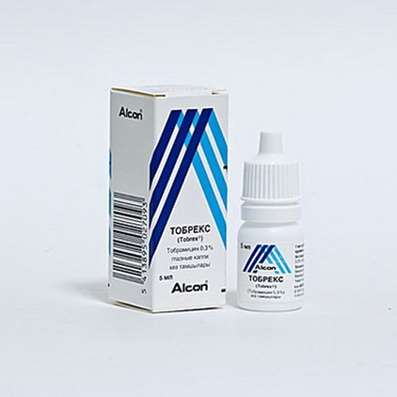Instruction for use: Tizanil
I want this, give me price
ATX Code M03BX02 Tizanidine
Pharmacotherapeutic group:
Muscle relaxants centrally acting [alpha agonists]
Muscle relaxants centrally acting [Drugs affecting neuromuscular transmission]
The nosological classification (ICD-10)
G35 Multiple sclerosis
Disseminated sclerosis, multiple sclerosis, Relapsing Multiple Sclerosis, Secondary progressive multiple sclerosis, Exacerbation of multiple sclerosis, Mixed forms of multiple sclerosis
G83.9 Paralytic syndrome, unspecified
bulbar paresis, bulbar palsy
G95.9 Disease of spinal cord, unspecified
Degenerative spinal disease, myelopathy funicular, Spinal spastic syndrome, Acquired spinal cord disease, Congenital spinal cord disease
R25.2 Cramp and spasm
Muscle spasms in tetanus, Pain smooth muscle spasm, Pain spasm of smooth muscles (renal and biliary colic, intestinal spasms, dysmenorrhea),Pain spasm of smooth muscles of internal organs, Pain spasm of smooth muscles of internal organs (kidney and biliary colic, intestinal spasms, dysmenorrhea), Painful muscle spasm, mimic spasm, spasticity, Muscle spasms, Muscle spasms of central origin, Muscle spasms, Neurological contracture with spasms, Night cramps in the extremities, Night leg cramps, Symptomatic convulsive state, West syndrome, Smooth muscle spasm, Spasm of vascular smooth muscle, muscle spasm, The spasm of the striated muscles due to organic diseases of the CNS, Skeletal muscle spasm, The spasms of smooth muscles of internal organs, The spasms of skeletal muscles, Spastic condition of striated muscle, Spastic pain, Spasmodic state of smooth muscle, Spasticity skeletal muscle, muscle cramps, convulsions, Leg cramps, Seizures of central origin, convulsive states, Spastic syndrome, Convulsive status in children, Tonic seizures, Cerebral spastic syndrome, Phenomenon jackknife
S06 Intracranial injury
Traumatic brain injury, Traumatic brain injury with a predominantly stem lesion level, Condition after traumatic brain injury,Brain Injury, skull Injuries, brain injury, Brain Contusion, Craniocerebral trauma, Traumatic brain injury,TBI, traumatic brain injury, The traumas of head injury, The consequence of traumatic brain injury, The consequence of TBI, Cranial trauma, Traumatic brain injury, Traumatic encephalasthenia, concussion
T90.5 Effects of intracranial injury
Condition after traumatic brain injury, Conditions after traumatic brain injury, Traumatic encephalopathy, Residual effects of traumatic brain injury, Recovery after traumatic brain injury, Conditions after traumatic brain injury
Composition
Tablets 1 tab.
active substance:
tizanidine hydrochloride 2,288 mg/ 4,576 mg/ 6.864 mg
(Equivalent to 2, 4 and 6 mg tizanidine respectively)
Other ingredients: MCC - 74.71 / 101.02 / 127.64 mg; lactose monohydrate - 79 / 109.43 / 118.14 mg; stearic acid - 0.3 / 0.4 / 0.5 mg; Colloidal anhydrous silica - 2.88 / 4.576 / 6.864 mg
Description
Tablets white or nearly so white color, Valium, with a facet on both sides.
Tablets 2 mg: with Valium on one party and chasing "2" - on the other.
Tablets, 4 mg: Phillips Valium on one party and chasing "4" - on the other.
Tablets 6 mg: Phillips Valium on one party and chasing "6" - on the other.
pharmachologic effect
analgesic, muscle relaxant.
pharmacodynamics
Tizanidine - muscle relaxant central action. The main point of application, its action is in the spinal cord. Stimulating presynaptic α2-adrenoceptors, tizanidine suppresses the release of excitatory amino acid receptors which stimulate the N-methyl-D-aspartate (NMDA-receptors). Consequently, at the intermediate neurons of the spinal cord is suppressed polysynaptic transmit excitation. Since this mechanism is responsible for excessive muscle tone, when the suppression of muscle tone decreases.Pharmacokinetics
Absorption high; Cmax plasma levels achieved after 1 h after administration. Bioavailability - about 34%. Eating does not affect the pharmacokinetics.
Vss - 160 l. Relationship to plasma proteins - 30%. In the dose range from 20 mg to 4 is linear pharmacokinetics.
It is metabolized rapidly and largely in the liver (95%) of CYP1A2 isoenzyme to inactive metabolites. Excreted mainly by the kidneys (70% of the dose as metabolites, 2.7% - unchanged). Displayed dwuhfazno: T1 / 2 in the first phase - 2.5 hours; final T1 / 2 - 22 hours average T1 / 2 unchanged substance -. 4.2 hours.
In patients with renal insufficiency (Cl creatinine <25 ml / min) Cmax plasma increases 2 times, T1 / 2 - 14 hours, AUC increased by 6 times.
Indications of Tizanil
oleznennye muscle spasms;
spasticity in multiple sclerosis;
spasticity with spinal cord injuries;
spasticity due to brain injury.
Contraindications
hypersensitivity to tizanidine and other ingredients;
severe hepatic impairment;
simultaneous application of potent inhibitors isozymes CYP1A2 (including fluvoxamine, ciprofloxacin);
Hereditary lactose intolerance, lactase deficiency, glucose-galactose malabsorption;
Children up to age 18 years.
Precautions: renal impairment; hypotension; bradycardia; concomitant use of oral contraceptives; age over 65 years. Do not abruptly cancel Tizanil®, reduce the dose gradually.
Pregnancy and breast-feeding
Since the use of tizanidine controlled studies in pregnant women have not been conducted, it should not be used during pregnancy unless the expected benefit to the mother outweighs the potential risk to the fetus.
Tizanidine slightly penetrates into breast milk, so breast-feeding period, the drug should be discontinued.
Side effects
From the nervous system: drowsiness, dizziness, hallucinations, insomnia, sleep disorder.
From the CCC: bradycardia, decreased blood pressure (in some cases expressed, up to the collapse and loss of consciousness).
From the digestive system: dry mouth, nausea, dyspepsia, elevated hepatic transaminases, hepatitis, liver failure.
From the musculoskeletal system: muscle weakness.
Other: fatigue, hypercreatininemia.
With a sharp lifting of the drug after long-term treatment and / or receiving high doses (as well as after the simultaneous application with antihypertensive drugs): tachycardia, increased blood pressure, acute cerebrovascular accident.
Interaction
The simultaneous use of tizanidine with fluvoxamine or ciprofloxacin (inhibitors isoenzyme CYP1A2) leads to a 33-fold increase in AUC of tizanidine. This may result in clinically significant and sustained reduction in blood pressure, leading to lethargy, weakness and slowing of psychomotor reactions (in some cases, loss of consciousness); lengthening the interval QT (see. "Overdose").
Not recommended simultaneous use of tizanidine with other inhibitors of CYP1A2 isoenzyme - antiarrhythmic drugs (amiodarone, mexiletine, propafenone), cimetidine, fluoroquinolones (enoxacin, pefloxacin, norfloxacin), rofecoxib, oral contraceptives, ticlopidine.
Antihypertensive drugs increase the risk of significant decrease in blood pressure and bradycardia.
Ethanol means CNS depressants may enhance the sedative effect of tizanidine, so it is not recommended the simultaneous use of tizanidine with means, oppressive central nervous system, and (or) alcohol.
Dosage and Administration
Inside.
Relief of painful muscle spasms: 2-4 mg 3 times daily, in severe cases - in addition to the night of 2-4 mg.
Treatment of skeletal muscle spasticity of neurological diseases: initial dose - 2 mg three times a day, and then gradually increase the dose to 4.2 mg at intervals of 3-7 days. The optimal daily dose - 12-24 mg in 3-4 hours, maximum daily dose - 36 mg.
In patients with renal failure (creatinine at Cl <25 mL / min) to start receiving 1 mg 2 times a day. If necessary, the dose is increased gradually, taking into account portability. If you want to get a more pronounced effect, it is recommended to increase the dose, take 1 time a day, and then - the multiplicity of purposes.
Overdose
Symptoms include nausea, vomiting, decreased blood pressure, dizziness, drowsiness, agitation, lengthening the interval QT, cramps, anxiety, respiratory failure, coma.
Treatment: gastric lavage, activated charcoal, carrying out forced diuresis, symptomatic therapy.
special instructions
Reported cases of liver dysfunction associated with taking tizanidine, but the application of a daily dose to 12 mg of these cases were rare. In this regard, it is recommended to monitor liver function tests 1 time per month during the first 4 months of treatment in patients who are assigned tizanidine in a daily dose of 12 mg and above, as well as in cases where there are clinical signs suggestive of liver dysfunction, such as unexplained nausea, anorexia, fatigue. In the case where the ALT and AST activity in serum persistently exceed 3 times ULN and more Tizanila® application it should stop.
In patients with congenital long QT syndrome tizanidine interval should be used with caution, because in preclinical animal (dogs) toxicity studies chronic QT interval elongation observed when using the drug at a dose equivalent to the maximum human dose.
In patients with coronary heart disease and (or) cardiac failure should be monitored ECG.
In patients with myasthenia gravis should be used with extreme caution only in cases where the expected benefit greatly exceeds the potential risk.
Effects on ability to drive or to perform work requiring higher rate of physical and mental reactions. With the development of drowsiness, dizziness or blood pressure lowering on background Tizanilom® therapy should refrain from types of work that require high concentration and quick reactions, such as driving or operating machinery.
release Form
Tablets, 2 mg. According to Table 10. in a blister (PVC / PE / PVDC / Al); 3 blisters in a carton pack.
Tablet, 4 mg. According to Table 10. in a blister (PVC / PE / PVDC / Al); 1 or 3 blisters in a cardboard pack.
Tablets, 6 mg. According to Table 10. in a blister (PVC / PE / PVDC / Al); 3 blisters in a carton pack.
Storage conditions of Tizanil
The temperature is not higher than 30 ° C.
Keep out of the reach of children.
Shelf life of Tizanil
3 years.
Do not use beyond the expiration date printed on the package.
Available with prescription

 Cart
Cart





